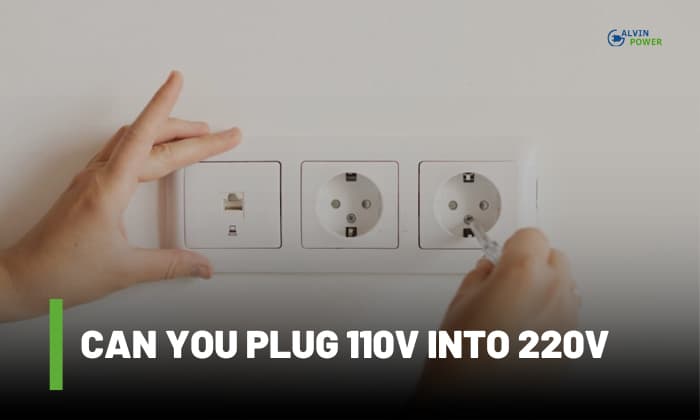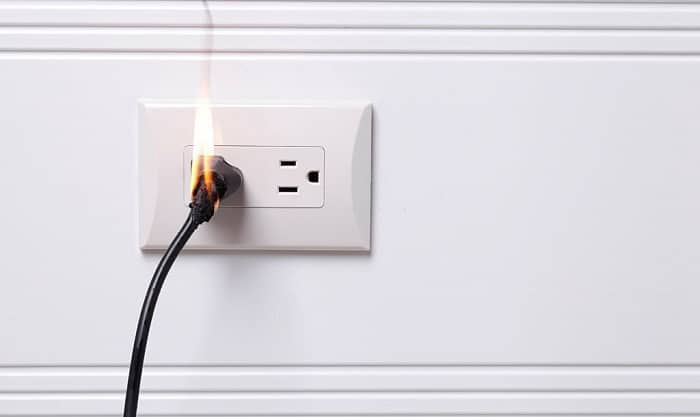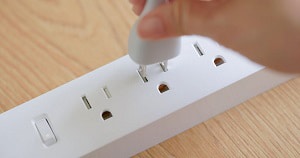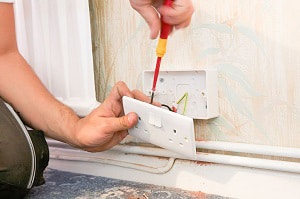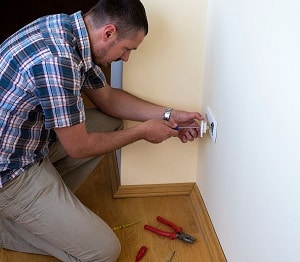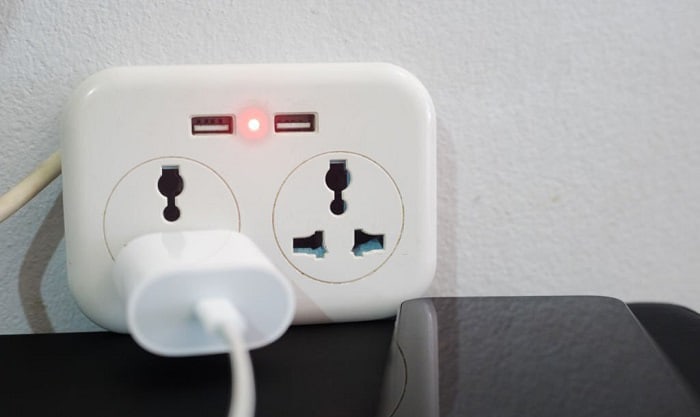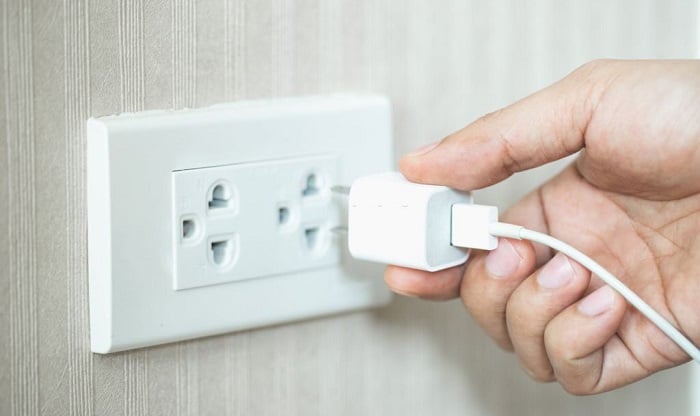You recently bought an appliance and want to use it immediately. But you’re unsure if the outlet for the electronic device in your property is 110V or 220V. Now, you’re asking yourself, “Can you plug 110V into 220V?”
It’s not good to directly plug a 110V appliance into a 220V outlet. Doing so generally creates an overload or overvoltage, resulting in problems like ruining the electronic device.
However, there’s a way for you to plug a 110V device into a 220v outlet without destroying the unit. Continue reading to learn about these methods, along with other relevant information about the main topic.
Table of Contents
Why You Can’t Do That
Connecting a 110V plug to 220V outlet isn’t ideal because the connection will typically result in an overvoltage.
The occurrence also happens fast. You may see a bright flash accompanied by smoke coming from the setup as soon as you make the connection.
Take note that this event can occur regardless of the 110V appliance or electronic device you’re plugging into a 220v outlet. For example, you’ll likely see the flash and smoke if you plug a 110v lamp into a 220V outlet.
What Happens If You Plug 110V Into 220V?
The power for the setup may quadruple at the time you plug a 110V appliance into a 220V outlet.
If you use 110V in 220V for appliances that generate heat, such as toasters, bulbs, and space heaters, they may also catch fire. If you’re lucky, you might use these devices for a while with this connection. But a burning smell may emerge, resulting in a fire if left unchecked.
Tips to Plug 110V Into 220V
At this point, you might wonder, is it safe to plug a 110V device into a 220V outlet? As mentioned earlier, it’s not ideal to make a direct connection between the appliance and the outlet this way.
But it’s still possible to plug a 110V electronic unit into a 220V outlet under the right conditions.
1. Use A Voltage Converter
As its name implies, a voltage converter is a device to transform the voltage used in an outlet. It controls the current throughput, making certain circuits possible, like enabling you to turn 110 into 220 volts.
A voltage converter can also be an excellent solution if you’re using 110V appliances in 220V country. Some converters are reasonably small and lightweight, making them great travel companions.
2. Change The Device’s Voltage Capacity
This option can be a good choice if you want to convert 110V to 220V without transformer. It’s a permanent fix, giving you peace of mind when plugging in your appliance.
But take note that changing the voltage capacity isn’t possible for every electronic device. It’s typically only applicable to expensive devices, such as refrigerators and dishwashers.
So if you want a 110V printer plugged into 220V, it might be possible to convert the device’s voltage capacity through modifications. However, read the product’s owner’s manual, especially the fine print, before you proceed with the project. Hire a professional as well, as this is not an easy task.
3. Rewire The Property
If you want a long-term solution, rewiring your property’s electrical setup is also a viable option. This choice is ideal for instances like when you accidentally plugged 110V to 220V and do not want a future repeat.
Bear in mind that changing a property’s electrical wiring can be quite expensive. Generally, the costs to complete this project are about $2 to $4 per square foot.
So an owner of a 1000-square-foot house may spend approximately $2,000 to $4,000 to rewire the home.
4. Convert The Outlet
If rewiring the entire property is expensive, a reasonably inexpensive solution is to convert the outlet’s voltage parameters. You can make a 110 outlet to 220V, but for this purpose, you’re going to transform a 220V receptacle into a 110V one.
This project generally only requires the following materials:
- Single-pole circuit breaker
- Voltage tester
- 110V-compatible receptacle
- Screwdriver
- Marking tool (e.g., pen or pencil)
Before proceeding with this operation, make sure you’re following the guidelines promoted by the National Electric Code (NEC). In particular, follow the rules mentioned in the NEC Wire Ampacity Table 310-16 to prevent mistakes.
Then, install the single-pole circuit breaker into the property’s service panel. Make sure that the circuit breaker is compatible with the box.
The basic process is as follows:
- Turn off the main circuit breaker.
- Verify that the outlet no longer has power by using the voltage tester.
- Disconnect the wires from the terminals in the outlet.
- Install the new wires for the new 110V outlet while following the product manufacturer’s instructions.
- Turn on the main and single-pole circuit breakers.
- Test the outlet with the voltage tester.
If you’re unsure if you possess the confidence, experience, or skills to complete this task, you should leave it to a technician instead.
Can I Plug 220V Into 110V?
If you plug 220v to 110V, the assembly may encounter some issues. For instance, some 220V electronic devices won’t effectively work when plugged into a 110v outlet. They may even break or catch fire in worst-case scenarios. For this setup to work, you’ll need a 110V to 220V adapter.
Frequently Asked Questions
What Happens If I Plug A 120V Appliance Into A 240V Outlet?
Like plugging a 110V appliance into a 220V outlet, connecting a 120V electronic device to a 240V receptacle will likely yield similar results. In particular, it may lead to abrupt overheating, causing irreparable damage to the device, breaker, or both.
If you’re about to turn a 110 outlet into a 220V one, consider installing another 240V receptacle as well to prevent potential overloads.
What Happens If You Plug In A 220V Appliance Into A 120V Outlet?
Plugging a 220V appliance into a 120V receptacle often results in the device working poorly. The appliance may even die or wear out faster.
Conclusion
At this point, you should now know the answer to the question, “Can you plug 110V into 220V?” Remember, don’t complete this setup without doing the necessary preparations.
For instance, you can use a voltage converter for the assembly. Another option is to transform the 220V outlet into a 110V module. If you have the extra cash, you can also rewire the entire property, although this project can be quite expensive.

I am Edwin Jones, in charge of designing content for Galvinpower. I aspire to use my experiences in marketing to create reliable and necessary information to help our readers. It has been fun to work with Andrew and apply his incredible knowledge to our content.

